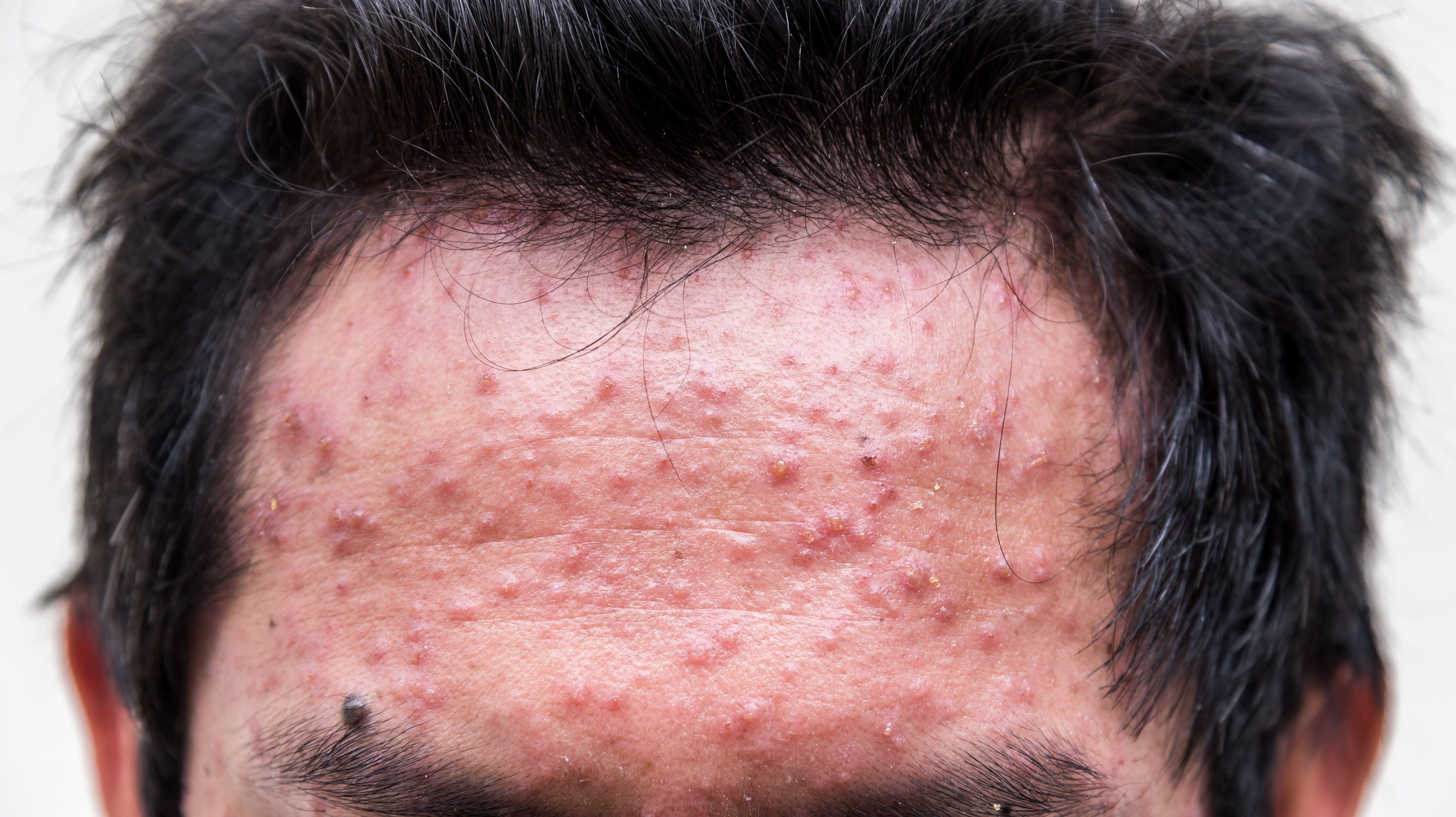- Acne
- Actinic Keratosis
- Aesthetics
- Alopecia
- Atopic Dermatitis
- Buy-and-Bill
- COVID-19
- Case-Based Roundtable
- Chronic Hand Eczema
- Chronic Spontaneous Urticaria
- Drug Watch
- Eczema
- General Dermatology
- Hidradenitis Suppurativa
- Melasma
- NP and PA
- Pediatric Dermatology
- Pigmentary Disorders
- Practice Management
- Precision Medicine and Biologics
- Prurigo Nodularis
- Psoriasis
- Psoriatic Arthritis
- Rare Disease
- Rosacea
- Skin Cancer
- Vitiligo
- Wound Care
Article
A paradigm shift in the treatment of acne
Author(s):
Treatment guidelines for mild, moderate and severe acne have evolved based on early and persistent inflammatory response in the development of acne.
“We all knew that increasing circulating androgens in puberty and increasing sebum production was followed by p. acnes. The inflammation came later,” Valerie D. Callender, M.D. says. “Now we know that’s not true. The inflammatory response occurs initially during that hyperkeratinization and at every stage in the development of acne.” (viiwee - stock.adobe.com)

Dr. Callender

Dr. Reynolds

Researchers have gained a new perspective on the role of inflammation in acne, which has resulted in changes in recommended approaches to acne treatment and patient management.
These changes impact how dermatologists treat acne in adolescence through adulthood and include patients with mild to severe acne vulgaris, according to Valerie D. Callender, M.D., professor of dermatology at Howard University College of Medicine, Washington, DC.
In the past, dermatologists thought acne’s initial pathophysiology involved abnormal desquamation of the keratinocytes that line the sebaceous follicle. That, they thought, triggered hyperkeratinization and comedogenesis, according to Dr. Callender, who presented “Acne through the Ages,” at the Generational Dermatology Palm Springs Symposium this past March.
“We all knew that increasing circulating androgens in puberty and increasing sebum production was followed by p. acnes. The inflammation came later,” she says. “Now we know that’s not true. The inflammatory response occurs initially during that hyperkeratinization and at every stage in the development of acne.”
Researchers started the conversation that inflammation was part of acne lesion initiation in a paper published in the Journal of Investigative Dermatology (JID) in 2003.1 Kircick LH addressed this “paradigm shift” in acne in 2016 in a paper in the Journal of Drugs in Dermatology (JDD).2
As a result, dermatologists’ approach to acne treatment has changed, according to Dr. Callender. Dermatologists, she says, should target inflammation and hyperkeratinization early on with topical retinoid therapy.
Guidelines of Care
The recommendation is for dermatologists to start topical retinoids as a first-line therapy when managing teens and adults with mild, moderate and severe acne, according to Guidelines of Care for the Management of Acne Vulgaris, published May 2016 in the Journal of the American Academy of Dermatology (JAAD).3
“By doing that and attacking the hyperkeratinization, you’re going to have less inflammation and less sequelae, particularly in patients with skin of color who commonly get post-inflammatory hyperpigmentation,” Dr. Callender says.
As for other topicals, dermatologists should consider using benzoyl peroxide or combinations with erythromycin or clindamycin to treat acne, says Dr. Callender. The guidelines recommend these as monotherapy for mild acne, or in conjunction with a topical retinoid or systemic antibiotic therapy for moderate to severe acne.
Topical antibiotics, including erythromycin and clindamycin, are effective acne treatments but dermatologists are using topical antibiotics less, especially as monotherapy, because of the risk of bacterial resistance, she says.
“Topical dapsone 5% or 7.5% gel is recommended for inflammatory acne, particularly in adult females with acne. There is limited evidence to support recommendations for sulfur, nicotinamide, resorcinol, sodium sulfacetamide, aluminum chloride and zinc in the treatment of acne,” According to Dr. Callender.
Updates in Antibiotics for Acne
Oral antibiotics, particularly in patients with moderate-to-severe acne and inflammatory acne that is resistant to topical treatments, remain important for acne treatment. But because of antibiotic resistance concerns, the guidelines recommend dermatologists have acne patients on and off oral antibiotics in three months’ time.
“In the past, dermatologists would prescribe tetracycline for several years,” Dr. Callender says. “We know that’s no longer the case.”
When treating acne with oral antibiotics, dermatologists should keep in mind that doxycycline and minocycline are similar in their effect and are more effective than tetracycline for treating acne. Dermatologists should restrict use of erythromycin due to the increased risk of bacterial resistance, according to Dr. Callender.
“Use of systemic antibiotics, other than the tetracyclines and macrolides, is discouraged because there are limited data for their use in acne,” according to Dr. Callender.
There is another antibiotic option for acne patients according to recent research. Sarecycline, a novel narrow spectrum antibiotic, is available for the treatment of moderate to severe acne. Researchers report in a phase 3 study published September 1, 2018, in JDD that once-daily oral sarecycline 1.5 mg/kg given for 12 weeks is effective, well tolerated and appears to be safe for moderate to severe acne vulgaris.4
Dermatologists’ decreasing reliance on oral antibiotics as a long-term treatment strategy highlights the need to be aggressive with topical retinoids and benzoyl peroxide, she says.
Isotretinoin remains a go-to treatment for severe nodular acne, and dermatologists continue to use it appropriately to treat moderate acne that is treatment resistant or to manage acne that is causing scars or psychosocial distress.
What has changed with isotretinoin use are recommendations for lab testing.
“There is always the issue about routine laboratory monitoring in patients on isotretinoin therapy. There are several studies that show it’s best to do a baseline lab test, that includes liver function, serum cholesterol and triglycerides, then to repeat that in two to three months and again at the end of the therapy, which is in six months,” Dr. Callender says. “Before we would have to do these tests every single month.”
Dermatologists and their patients on isotretinoin also can skip routine complete blood count monitoring because researchers have found that isotretinoin does not affect those numbers, she says.
Recommendations for monthly pregnancy testing in women of child bearing age has not changed.
Acne and Androgens
It’s important to note that hormones are not just associated with the adult female patient, according to Dr. Callender.
“All acne is hormonal,” she says. “Androgens play a role.”
Research has shown that estrogen-containing combined oral contraceptives are effective and recommended for treating inflammatory acne in women.
The FDA approved three oral contraceptives for treating acne:
- Ortho Tri-Cyclen (norgestimate/ethinyl estradiol, Janssen Pharmaceuticals)
- Estrostep (ethinyl estradiol and norethindrone, Allergan)
- Yaz (drospirenone/ethinyl estradiol, Bayer).
While studies suggest the efficacy is similar among the approved oral contraceptives, Rachel V. Reynolds, M.D., assistant professor of dermatology at Harvard Medical School and vice chair Dermatology Beth Israel Deaconess, says she favors Yaz, which has androgen receptor blocking activity in addition to anti-androgen benefit.
Dr. Callender says she and other dermatologists use spironolactone in select female acne patients.
“It is off-label. But I think we’re using spironolactone a little more for adult female acne than before. The dosage ranges from 50 to 200 mg a day. Basically, it’s an antiandrogen and reduces sebum production in vivo. We have studies that show that. Side effects that we’re concerned about include hyperkalemia,” she says.
However, dermatologists might not have to monitor patients’ potassium levels while they’re on spironolactone if those patients are young and healthy. Dr. Callender cites a study published in 2015 in JAMA Dermatology, in which the authors conclude: “The rate of hyperkalemia in healthy young women taking spironolactone for acne is equivalent to the baseline rate of hyperkalemia in this population. Routine potassium monitoring is unnecessary for healthy women taking spironolactone for acne.”5
Patients on spironolactone might experience irregular menses, according to Dr. Reynolds, who presented on hormonal treatments for acne during the March 2019 American Academy of Dermatology Annual Meeting in Washington D.C.
“If I’m going to start an antiandrogen medication like spironolactone, when possible I like to have the patient also on the birth control pill because it helps to regulate menses,” Dr. Reynolds says.
Dr. Reynolds also says she often prescribes hormonal therapies for acne along with topical retinoids.
Sometimes, she’ll add a topical antibiotic combined with benzoyl peroxide.
Acne and Skin of Color
Dr. Callender says inflammatory acne lesions can result in acne scars and post-inflammatory hyperpigmentation in skin of color.
“Usually we use our acne therapy, like a topical retinoid, which actually helps to minimize some of the pigmentation. We add topical hydroquinone when needed, but also use topical azelaic acid, which is off-label, but helps the acne and discoloration,” Dr. Callender says.
Disclosures:
Dr. Callender performs clinical research, is on the advisory board, consults with and/or speaks for Almirall, Aclaris, Aerolase, Allergan, Avon, Dermira, Eli Lilly, Foamix, Galderma, L’Oreal, Menlo, Merz Aesthetics, Novan, Ortho, Pfizer, Revance and Unilever.
Dr. Reynolds reports no relevant disclosures.
References:
- Jeremy AH, Holland DB, Roberts SG, Thomson KF, Cunliffe WJ. Inflammatory events are involved in acne lesion initiation. J Invest Dermatol. 2003;121(1):20-7.
- Kircik LH. Understanding and Addressing the Acne Vulgaris Paradigm Shift. J Drugs Dermatol. 2016;15(1 Suppl 1):s6.
- Zaenglein AL, Pathy AL, Schlosser BJ, et al. Guidelines of care for the management of acne vulgaris. J Am Acad Dermatol. 2016;74(5):945-73.e33.
- Moore A, Green LJ, Bruce S, et al. Once-Daily Oral Sarecycline 1.5 mg/kg/day Is Effective for Moderate to Severe Acne Vulgaris: Results from Two Identically Designed, Phase 3, Randomized, Double-Blind Clinical Trials. J Drugs Dermatol. 2018;17(9):987-996.
- Plovanich M, Weng QY, Mostaghimi A. Low Usefulness of Potassium Monitoring Among Healthy Young Women Taking Spironolactone for Acne. JAMA Dermatol. 2015;151(9):941-4.
Newsletter
Like what you’re reading? Subscribe to Dermatology Times for weekly updates on therapies, innovations, and real-world practice tips.











